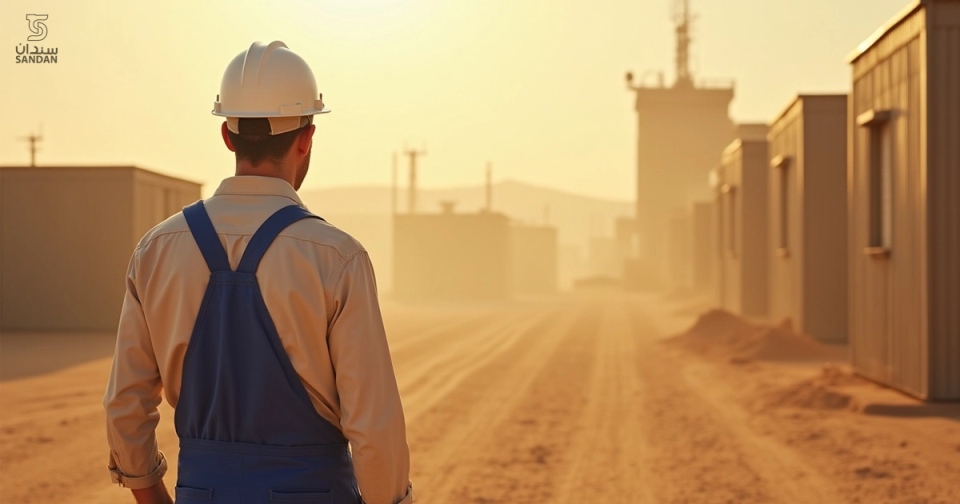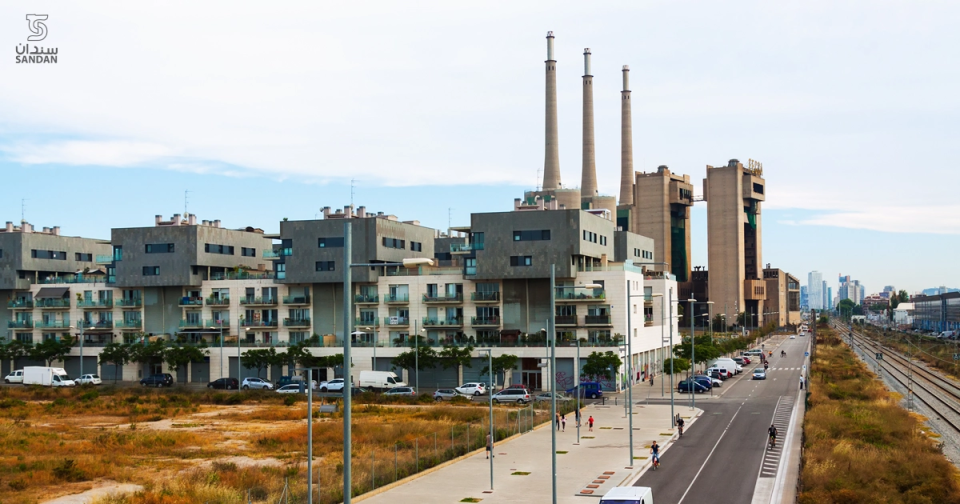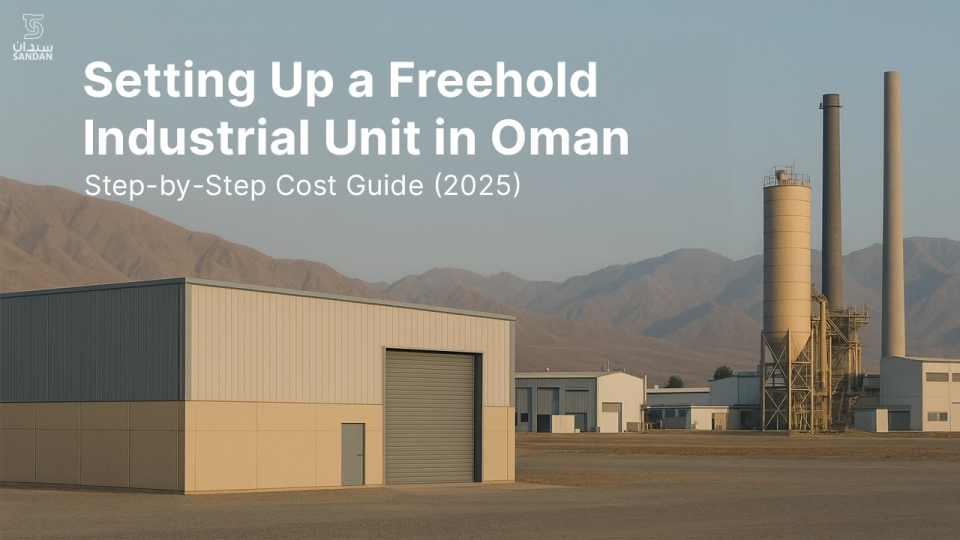Introduction
Thinking about owning your own space to manufacture, store, or trade in Oman? Thanks to Royal Decree 38/2025, you can now buy freehold industrial units Oman instead of leasing them. That switch from long-term usufruct to outright ownership means lower risk, clearer exit options, and—potentially—a stronger resale upside.
If you run a workshop in Dubai’s Industrial City or a trading warehouse in Sharjah, you’ll notice the difference right away: land in Muscat’s new industrial zones regularly costs 60–80 percent less than comparable plots in the UAE, while corporate tax remains at zero. Add lower power tariffs and an investor-friendly licensing portal, and Oman suddenly looks like the Gulf’s value play for SMEs and mid-cap manufacturers.
This guide walks you through every major cost and milestone, from choosing a site in Sandan Industrial City to registering your deed and flipping the lights on. The goal is simple: by the end, you’ll know the exact steps, fees, and paperwork needed to get your unit open for business—without surprises.
Quick snapshot: what you’ll learn
• Total budget ranges for 55 m², 100 m², and 500 m² units, including land price, fees, and fit-out
• The eight-step path from reservation to production line, explained in plain language
• Up-to-date licensing, utility, and compliance costs for 2025
• Financing options such as Sandan’s 18-month payment plan and Islamic ijara mortgages
• The numbers behind Oman-versus-UAE: land price, taxes, and annual operating costs
• A downloadable cost calculator and legal checklist so you can plug in your own figures 
1. 2025: Freehold ownership goes industrial
Until recently, factory owners and traders in Oman had to settle for long-term leases known as usufruct agreements. Royal Decree 38/2025 changed that overnight by allowing outright title to land and buildings inside special economic and industrial zones. In practice, this means you can now put a real deed for freehold industrial units Oman in the company safe—or even pledge it to a bank—just as you would with an apartment or villa.
Why the timing matters:
- Omani corporate income tax on non-oil activities is still zero, while the UAE’s federal rate has risen to nine percent.
- Industrial electricity costs in Muscat’s new zones average 12–18 bz/kWh, less than half of what many Dubai plants pay.
- A deed registered in your company’s name clears up exit planning: you can resell, sub-let, or collateralize the asset without seeking zone-authority consent each time.
For UAE-based manufacturers facing higher rent renewals at JAFZA, DIP, or KIZAD, the math is beginning to tilt south-east toward Muscat.
2. What it really costs: the 2025 cost matrix
Before you start paperwork, it helps to see the full bill of materials. The figures below combine land price, government fees, and a realistic fit-out allowance so you can compare apples to apples with other Gulf zones.
| Typical unit size | Land or unit price* | Deed registration (3 %) | Licences & approvals | Utility deposits | Basic fit-out** | First-year total |
| 55 m² workshop (Sandan listing) | OMR 35 000 | 1 050 | 1 200 | 450 | 5 000 | ≈ 42 700 |
| 100 m² warehouse | 60 000 | 1 800 | 1 500 | 600 | 7 500 | ≈ 71 400 |
| 500 m² green-field plot | 110 000 | 3 300 | 3 500 | 1 400 | 35 000 | ≈ 153 200 |
* Current Sandan and MADAYN asking prices as of Q2 2025.
** Basic civil-defence compliant fit-out (concrete floor, power busbar, fire system).
Reading the table left to right gives you a true “door-open” cost. If you want to fine-tune the numbers, grab the free Excel calculator linked at the end of this guide and plug in your exact unit size, power load, and build-out specs.
3. The eight-step path from reservation to ribbon-cutting
Getting from “I like this unit” to “machines are humming” in Oman is simpler than many investors expect. Work through the eight milestones below one by one and you will stay on schedule and on budget.
- Pick your zone and unit – Tour Sandan Industrial City online or in person, shortlist two or three units that match your power load, column spacing, and parking needs.
- Pay the booking fee – Zones typically ask for five percent of the unit value to hold it for 30–45 days while you prepare paperwork.
- Run title and zoning checks – A local conveyancer confirms the plot is clear of liens and meets your activity code. This takes two to four working days.
- Sign the sale–purchase agreement – Once your lawyer is happy, sign electronically; Sandan sends you a counter-signed copy by email.
- Register the deed – Visit the Ministry of Justice counter inside the zone, pay the three-percent registration fee, and walk out with a stamped deed in your company’s name.
- Apply for utilities – Submit the load sheet for power, water, and telecom; pay deposits and schedule meter installation.
- Secure industrial and environmental licences – Upload drawings to the OPAZ or MADAYN portal; approvals often arrive within two weeks for low-risk activities.
- Fit-out, inspection, and go-live – Pour the floor slab, install mezzanines or cranes, pass the Civil Defence inspection, and collect your occupancy permit.
Most UAE-based owners complete steps 1-4 remotely, then fly in for a single day to register the deed and open bank accounts—cutting both travel and downtime.
4. Your cost components unpacked
Price tags inside zone brochures rarely explain where the extra rials go. Let’s break down every major line item so you can see which numbers are fixed, which are negotiable, and where smart choices save money on freehold industrial units Oman.
Land or unit price
: This is the sticker price you see on listings—currently 35,000 to 45,000 OMR for a 55 m² dual-level workshop in Sandan. Larger green-field plots start around 1 OMR per square metre in more remote zones. Prices are influenced by road frontage, crane capacity, and proximity to Muscat.
Deed registration
: The Ministry of Justice charges three percent of the declared property value plus a small stamp fee. Payable once, at the time of transfer.
Zone and municipal licences
: Manufacturing and warehousing activities pay between 250 and 3,000 OMR depending on risk category and floor area. Low-hazard storage falls at the lower end; chemical handling is higher.
Utility deposits
: Expect roughly 1.5 OMR per kVA of requested electricity load and a flat 200 OMR for water. A 55 m² light-engineering shop might post a 450 OMR deposit, whereas a 500 m² plastics plant could exceed 1,200 OMR.
Fit-out and compliance
: Concrete flooring, power busbars, sprinklers, and fire alarms add 80–120 OMR per square metre. Budget extra if you need mezzanines, clean rooms, or overhead cranes.
Annual operating expenses
: Service charges in Sandan average 0.75 OMR per square metre per year, covering security, landscaping, and road maintenance. Utility tariffs are billed monthly; power in Muscat zones sits well below Dubai’s industrial rates, helping long-run cash flow.
Knowing exactly how each cost behaves lets you decide where to keep things lean and where to spend for future scalability—turning a rough budget into a confident business plan.
5. Financing, incentives and what your money can earn
Cash is king, but Oman gives buyers of freehold industrial units Oman several friendly ways to spread the hit and improve returns.
Interest-free instalments at Sandan
Sandan Industrial City lets you pay 60 % up-front, then clear the balance over 18 months with zero interest. For a 35 000 OMR workshop that’s about 1 555 OMR per month—often less than the rent you’d hand over for a similar space in Dubai.
Islamic ijara and conventional mortgages
Local lenders such as Bank Muscat, Oman Arab Bank and Ahli Islamic will finance up to 70 % of the deed value once construction is complete. Loan terms run five to ten years, and you can pledge the same title deed you just registered.
SEZ and SME sweeteners
• Zero customs duty on imported machinery and raw materials for up to 15 years in Duqm and Sohar
• Fifty-percent licence-fee discount for small and medium manufacturers in 2025
• Five-year break on municipal tax in qualifying industrial cities
What the numbers look like
Take that 55 m² workshop: a typical lease rate is 325 OMR per month. Net eight-percent yield means your capital is recovered in under six years, and any long-term appreciation is pure upside. If you leverage at 50 %, the cash-on-cash return climbs into double digits—without the nine-percent corporate tax that now applies next door in the UAE.
6. Oman vs UAE: the industrial freehold face-off
| Cost or rule | Oman (Sandan/Duqm) | UAE (DIP/JAFZA) | Why it matters |
| Land price per m² | 1–12 OMR | ≈ 220 OMR | Oman is 60–80 % cheaper, leaving budget for machinery. |
| Corporate income tax | 0 % | 9 % (since 2024) | Retain more profit or reinvest in expansion. |
| Deed structure | 100 % freehold | Freehold only in designated zones | Fewer restrictions on resale or mortgage in Oman. |
| Power tariff (industrial) | 12–18 bz/kWh | 32–38 bz/kWh | Lower OPEX boosts long-run margins. |
| Annual service charge | 0.75 OMR/m² | 9–12 AED/ft² | Smaller fixed costs help SMEs stay lean. |
Put simply, the Gulf’s value equation has flipped. If you are priced out of JAFZA or facing a hefty rent hike in ICAD, Muscat’s industrial belts let you own rather than lease, slash operating costs, and still stay one day’s trucking from the UAE border. For manufacturers, that combination is hard to ignore.
7. Staying compliant and future-proof
Buying the deed is only half the game; running an industrial unit in Oman also means ticking a few ongoing boxes that keep inspectors and auditors happy. The good news is that most rules are clear, online, and designed to encourage rather than punish.
• Omanisation target: hire at least twenty percent Omani staff for manufacturing licenses; the Ministry of Labour lets you phase this in over three years if you start below the line.
• Environmental green light: low-risk activities complete a short online self-assessment, while higher-risk plants upload an environmental-impact summary and pay a one-time fee (250–500 OMR).
• Fire and safety: the Civil Defence Directorate signs off on sprinklers, alarms, and exit routes; once you pass, renewals happen every two years through the same portal.
• Solar-ready rooftops: Muscat’s zones allow net-metering, so adding panels can slash daytime power bills and boost ESG credentials without extra permitting.
• Waste and effluent log: from January 2026, units over 200 m² must file a quarterly waste-manifest online; most third-party recyclers provide the paperwork for you.
Handle these items as part of your build-out plan and the operational side of freehold industrial units Oman becomes routine rather than a scramble.
8. Your questions answered fast
Can I finance the purchase before construction finishes?
Yes. Sandan’s in-house instalment plan covers units at shell-and-core stage. Banks release ijara funds once the title deed is issued and the structure is 80 percent complete.
What visas do I get as an owner?
A freehold deed lets the company apply for investor and staff visas through the one-stop zone office—no separate real-estate visa is required.
Can I sell or lease the unit to a non-GCC company later on?
Absolutely. The deed transfers at the Ministry of Justice desk inside the zone, and the new owner picks up the licence. No capital-gains tax applies.
Is sub-leasing allowed?
Yes, provided the sub-tenant’s activity matches the licence category. Simply upload the sub-lease to the portal and pay a small admin fee.
What happens if I miss the Omanisation target?
You pay a modest levy per missing headcount until you hire locals. Most companies prefer to partner with local training institutes instead—it usually costs less and builds goodwill.
These quick answers remove the final unknowns, letting you move forward with confidence on your freehold industrial unit in Oman.
9. Next steps—secure your plot at Sandan Industrial City
You’ve seen the numbers, weighed the pros and cons, and you’re ready to move from research to action. Start by booking a site visit—either in person if you’re in Muscat or virtually if you’re still in the UAE. Sandan’s sales team can walk you through available unit layouts, confirm power capacity, and lock a reservation with a five-percent booking fee that’s fully credited to the purchase price.
Once reserved, gather your trade-licence copy, passport pages, and a short business profile. Email those to Sandan’s conveyancing desk and they’ll prepare the sale–purchase agreement for electronic signature. Plan one quick trip to Muscat to register the deed at the on-site Ministry of Justice counter; the whole visit often takes less than half a day. From there, utility connections and fit-out scheduling can run in parallel while you finalise licensing on the OPAZ portal. Within eight to twelve weeks, most owners are turning on the lights and moving equipment into their freehold industrial units Oman.
Need help with financing? Bank Muscat’s industrial-mortgage desk is literally across the street from Sandan’s gate, and their team is accustomed to fast-tracking applications tied to newly issued deeds.












